Get insights on what startups need to succeed, from gamechanging entrepreneurs and our investors.
Introducing the Founding Voices Newsletter


Get insights on what startups need to succeed, from gamechanging entrepreneurs and our investors.
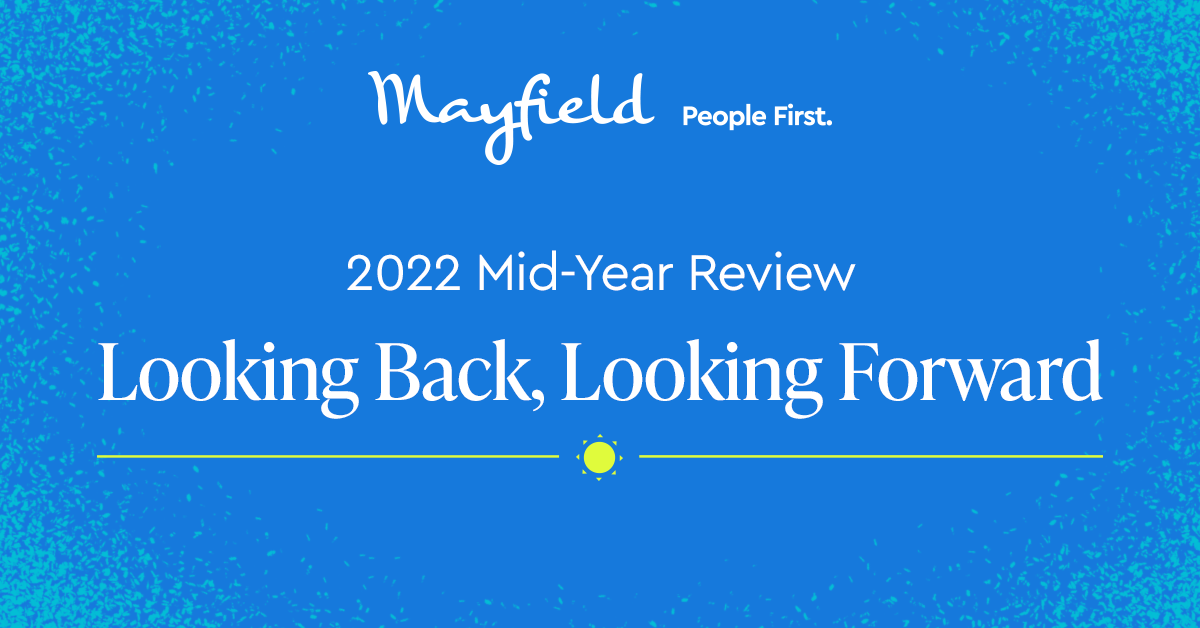
In the first six months of 2022, we curated conversations with gamechanging entrepreneurs to share company building insights; provided advice for founders navigating a changing and challenging market; marked milestones from our portfolio companies; and strengthened our communities as we were able to meet in person again. Even in challenging times we are ever inspired by entrepreneurs changing the way we live, work and play. Join us as we look back on the first half of 2022 and forward to all the innovation to come.

Unexpected complications affect one in five pregnancies, yet women, expecting parents and doctors lack a reliable way to detect complications before symptoms appear. Mirvie’s new funding will support the continued clinical and commercial development of their proprietary RNA platform, which is the first to predict preeclampsia and preterm birth months before they happen.
Precision Immunology Platform Endpoint Health is dedicated to addressing unmet needs in immune-mediated acute and chronic diseases. This new funding will be used to expand its therapeutic pipeline to include programs for chronic immune-mediated diseases as well as to advance their precision sepsis therapy to a Phase II clinical trial.
The movement toward electric transportation and renewable energy is rapidly going mainstream and will hugely impact our planetary health. However, the lithium-ion battery market is heavily supply constrained as new chemistries and better testing processes are required to improve performance and unlock the supply of batteries. We’re thrilled to partner with the Chemix team as they work to save our planet, one sustainable battery at a time
How do you evolve from PhD to startup founder and beyond? We recently hosted a series of conversations at TechCrunch Early Stage, including one with Mammoth’s Janice Chen and Endpoint’s Diego Rey, who shared their learnings on how to choose the right co-founders, advice for first-time founders, and more.
Mammoth CEO Trevor Martin joined Mayfield’s Ursheet Parikh and Arvind Gupta along with WSGR’s Raj Judge at Built With Biology to discuss company building in human & planetary health from inception to iconic. They shared insights on creating built-to-last vs built-to-sell companies, building and designing a platform, mission to market vs mission to science, and more.
XR wellness platform TRIPP has raised $11M to continue building the mindful metaverse that can, in the words of CEO Nanea Reeves, “deepen connection to self, facilitate mental well-being and enable personal and collective transformation.” They have also announced the acquisition of cross-service world-building platform Eden to enable users to further customize their TRIPP experiences.
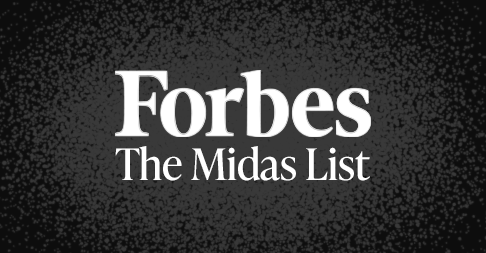

Precision immunology platform company Endpoint Health has partnered with Grifols to develop and commercialize an Antithrombin III (AT-III) therapy to treat sepsis. This collaboration marks a huge step towards getting new treatments to market for critical immune system dysfunctions like sepsis that kill more people than all cancers combined.
Mammoth Biosciences’ ground-breaking CRISPR-based molecular diagnostic system for Covid-19 testing received Emergency Use Authorization from the FDA. Mammoth continues to redefine engineering biology through their new strategic collaboration with Bayer to develop in-vivo gene therapies, starting with diseases of the liver, using Mammoth’s cutting edge CRISPR platform.
Each year the health care system loses approximately $1 trillion to waste, and one major contributor is inefficient operations. Qventus’s AI-enabled care operations automation software tackles this problem head on with proven results. In 2021 alone, Qventus automated access and patient flow for more than 2 million patient encounters, eliminating over 200 years of excess hospital stay days and resulting in a 10X return on investment.
Unexpected complications affect one in five pregnancies, and yet today women and doctors lack a reliable way to detect complications before symptoms appear. Mirvie’s proprietary RNA platform is the first of its kind to predict unexpected complications by revealing the underlying biology of each pregnancy. This technology is set to revolutionize pregnancy health by allowing women and their doctors to intervene before underlying issues become health crises.
Mammoth Biosciences has appointed Elaine Sun as its new Chief Operating Officer/Chief Financial Officer, marking a notable expansion of its leadership team. Elaine has over 25 years of experience in the life sciences industry and joins from Halozyme, a biotechnology company that develops novel oncology therapies.
Arvind shares his stance on morality in investment and shares how his personal experiences keep him grounded on his mission to improve and save lives through investing in planetary health. Arvind also recently shared some candid pitch advice for first time founders and where he’s looking for the next iconic companies.
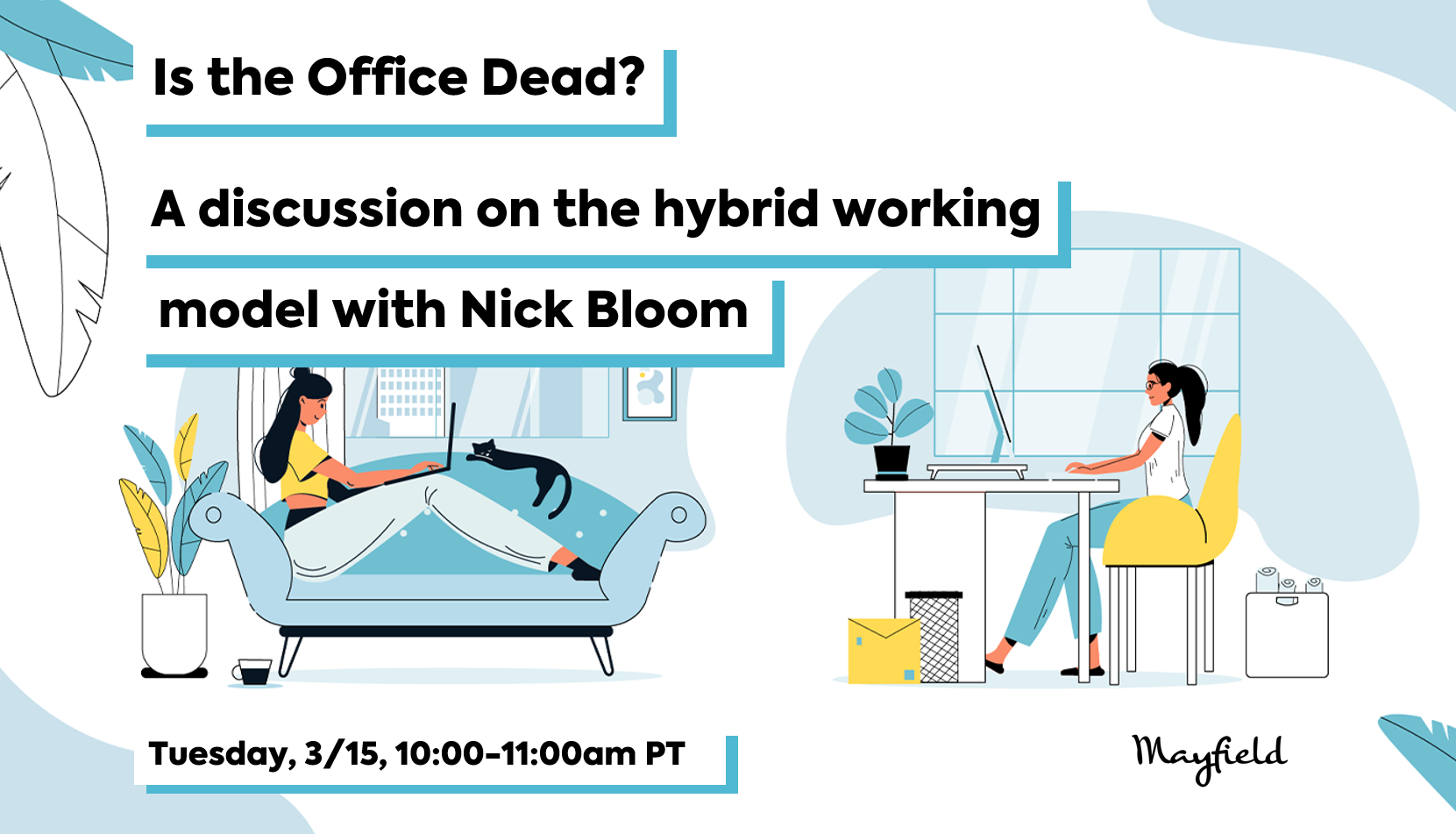
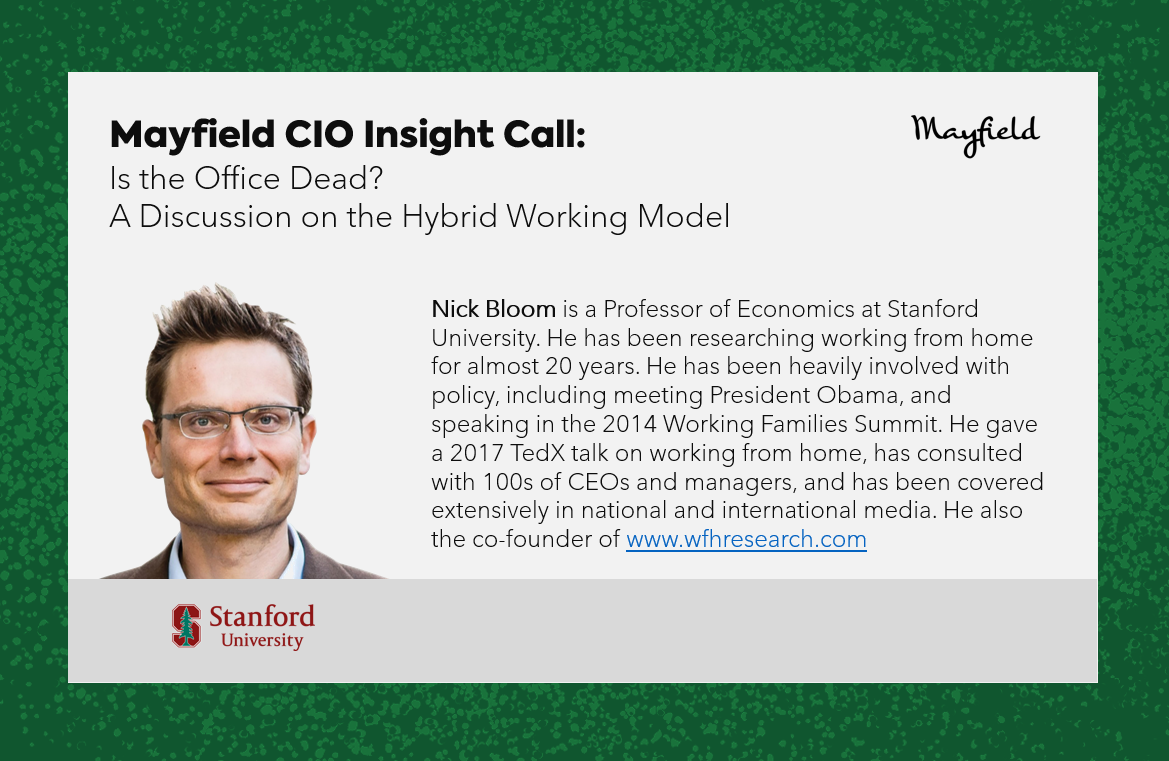
Yesterday we hosted our latest CIO Insight Call on the topic of the future role of the office and the hybrid working model with Nick Bloom. Nick is an economics professor at Stanford University, is an expert researcher on remote and hybrid working models, even prior to the COVID-19 pandemic. These days it has become increasingly clear that these new modes of work are both widespread and here to stay – particularly within IT and security organizations. Unfortunately, while hybrid work can free up employee time by reducing commutes and office prep, it can also create organizational friction with difficult logistical, strategic, and managerial challenges. Nick led a discussion around his research and guidelines on implementing effective hybrid work plans, for both managers, employees and organizations. See below for a few of our key takeaways and the recording from the call.
Key Takeaways
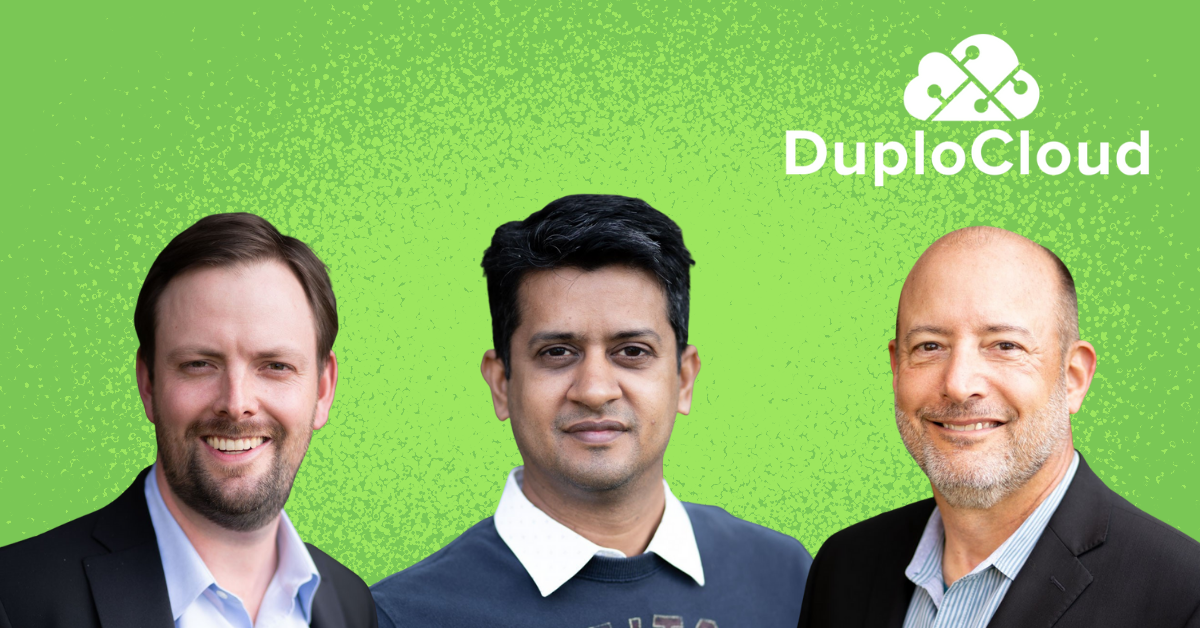

As the cloud-first world has gone mainstream, skilled developers, especially DevOps engineers, have become an increasingly scarce resource, and engineering leaders within companies tasked with delivering cloud-first, security compliant applications are frustrated.
No-code/Low-code is a trend that has been growing to address the talent shortage problem. We are proud to lead the $15 million Series A in DuploCloud, an integrated no-code/low-code cloud automation, security and compliance platform helping companies rapidly deliver delightful and secure cloud applications. By delivering the product as a DevSecOps-as-a-service, DuploCloud is easy-to-use and leads to faster deployment, while allowing companies to re-allocate developers to focus on creating new applications.
Venkat, DuploCloud founder and CEO, saw the problem as an early engineer in the Microsoft Azure group. When we met them, we were impressed by their customer traction, with 50+ customers and 270% year on year growth. We were also struck by the measurable impact of their products, with customers attesting to launching apps 6 months ahead of schedule, delivering 25 services in a month, and the ability to implement 100s of infrastructure and security changes with no DevOps engineers. And all this with apps that quickly meet security and compliance requirements.
We are looking forward to watching the team deliver on their vision to empower developers to create delightful, secure, and compliant cloud-first applications.